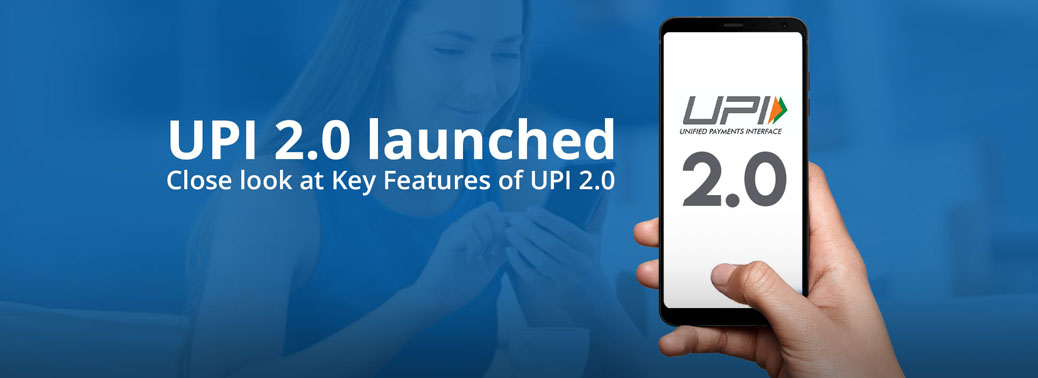UPI 2.0
11, Aug 2018

Prelims level : Indian Economy
Mains level :
- NPCI launches UPI 2.0 with overdraft facility. National Payments Corporation of India (NPCI) has upgraded unified payments interface (UPI) with enhanced security features and overdraft facilities.
- With the launch of UPI 2.0 we hope to touch new milestones by expanding UPI’s presence especially in person-to-merchant payment space.
About:
- The UPI 2.0 has enhanced features such as Invoice in the Inbox, Signed Intent/QR, UPI Mandate with Blocking of Funds and UPI for Overdraft Account, all operating in a safe and secure manner.
-
- Overdraft facility in addition to current and savings accounts, customers can link their overdraft account to UPI. Thus UPI 2.0 will serve as an additional digital channel to access OD account.
- One Time Mandate UPI mandate could be used in a scenario where money is to be transferred later by providing commitment at present. UPI 2.0 mandates are created with one-time block functionality for transactions. Customers can pre-authorise a transaction and pay at a later date.
- Invoice in the inbox This feature is designed for customers to check the invoice sent by merchant prior to making payment. It will help customers to view and verify the credentials and check whether it has come from the right merchant or not.
- Signed intent & QR This feature is designed for customers to check the authenticity of merchants while scanning QR code.
- It is a bid to integrate its retail payments infrastructure with businesses, whereby a trader, restaurateur, shopkeeper or SME entrepreneur can send a Goods and Services Tax (GST) invoice or a bill to his customer as an attachment for verification and payment digitally.
- UPI 2.0-member banks as on date are: State Bank of India, HDFC Bank, Axis Bank, ICICI Bank, IDBI Bank, RBL Bank, YES Bank, Kotak Mahindra Bank, IndusInd Bank, Federal Bank and HSBC.
- To incorporate signed intent for QR (quick response) code-based payments to provide an additional layer of security.
- The launch has been the result of the calibrated approach adopted by the Reserve Bank – in the initial years as a developer and in later years as a catalyst and facilitator.
- As UPI has grown considerably post demonetisation and has been the catalyst for retail payment systems with many banks building products around the UPI with the fintech industry and other IT players positioned at the edge, providing innovative solutions for end-user delight.
- But UPI 2.0 is a big change and all the apps will need to be changed.
Unified Payments Interface:
- Unified Payments Interface (UPI) is an instant real-time payment system developed by National Payments Corporation of India facilitating inter-bank transactions. The interface is regulated by the Reserve Bank of India and works by instantly transferring funds between two bank accounts on a mobile platform
- It is a system that powers multiple bank accounts into a single mobile application (of any participating bank), merging several banking features, seamless fund routing & merchant payments into one hood.
- It also caters to the “Peer to Peer” collect request which can be scheduled and paid as per requirement and convenience. Each Bank provides its own UPI App for Android, Windows and iOS mobile platforms.
NPCI:
- National Payments Corporation of India (NPCI), which is the umbrella body for retail payments in the country which was set up in 2009 as the central infrastructure for various retail payment systems in India and was envisaged by the Reserve Bank of India (RBI) as the payment utility in the country.
- NPCI is a not-for-profit organisation registered under section 8 of the Companies Act 2013.
The organisation is owned by a consortium of major banks and has been promoted by the country’s central bank, the Reserve Bank of India
Services:
- It looks range of services like switching of interbank ATM transactions through National Financial Service, Cheque Truncation System, National Automated Clearing House (NACH), Aadhaar Enabled Payment System (AePS), USSD based *99#, RuPay card, Immediate Payment Service (IMPS), Unified Payments Interface (UPI), Bharat Interface for Money (BHIM), BHIM Aadhaar, National Electronic Toll Collection (NETC) and Bharat Bill Pay.






